PVDF masterbatch is a sub category of fluoroplastic masterbatch, and its core component is polyvinylidene fluoride (PVDF) resin. PVDF resin is made by homopolymerization of vinylidene fluoride (VDF) or copolymerization with other monomers such as tetrafluoroethylene, hexafluoropropylene, etc. The high fluorine atom content in the molecular chain endows the material with unique properties. PVDF masterbatch is made into granular products by mixing these PVDF resins with specific proportions of pigments, dispersants, and other additives through processes such as melt extrusion, achieving color customization and functional modification.
Characteristic
Chemical resistance
Almost insoluble in any organic solvent, resistant to strong acids, alkalis, oxidants, and corrosive chemicals, suitable for harsh environments such as chemical and semiconductor industries.
Weather resistance
Resistant to ultraviolet radiation and ozone, with stable performance when exposed to outdoor environments for a long time, suitable for fields such as building membrane structures and photovoltaic backboards.
Mechanical properties
It has high strength, high toughness, good impact resistance and wear resistance, suitable for dynamic sealing and wear-resistant components.
Electrical performance
It has excellent insulation performance and low dielectric constant (≤ 8), suitable for high-frequency and high-voltage electric field environments, such as in the field of electronics and electrical engineering.
Processability
Excellent fluidity, capable of forming complex shapes through processes such as blow molding, extrusion, injection molding, etc., with minimal performance loss during processing.
Environmental Protection and Safety
Compliant with ROHS standards, free of heavy metals such as cadmium, lead, chromium, etc., it can be used for food contact grade applications (such as medical device components).
Types
There are multiple classification methods for PVDF masterbatch, and the following are some common types:
Classified by function:
Coloring masterbatch: This is one of the most common types, which gives PVDF products different colors by adding various pigments or dyes. Such as PVDF red masterbatch, white masterbatch, blue masterbatch, etc. These masterbatch can meet the color requirements of different application scenarios and are widely used for coloring PVDF products in fields such as construction, electronics, and automotive.
Functional masterbatch: including anti-static masterbatch, conductive masterbatch, flame retardant masterbatch, weather resistant masterbatch, etc. Taking carbon nanotube conductive PVDF masterbatch as an example, it is made by pre dispersing carbon nanotubes in PVDF resin, which can endow the product with anti-static, electrostatic dissipation, conductivity, and electromagnetic shielding properties.
Classified by processing technology:
Extrusion grade masterbatch: With good fluidity and thermal stability, it is suitable for extrusion molding processes and can be used to produce PVDF pipes, sheets, films, and other products. During the extrusion process, it can be smoothly extruded at lower temperatures and pressures, and the product has high dimensional accuracy and surface quality.
Injection grade masterbatch: With good fluidity, it can quickly fill the mold cavity and is suitable for injection molding processes. It is used to manufacture various PVDF plastic products, such as electronic component casings, automotive parts, daily necessities, etc. It can produce products with good appearance quality and high dimensional accuracy in a shorter molding cycle.
Blown film grade masterbatch: It has high melt strength and flexibility, and can form stable film bubbles during the blown film process, producing high-quality PVDF films. This film has good transparency, weather resistance, and mechanical properties, and can be used in fields such as packaging, agriculture, and construction.
Classified by carrier resin: generally refers to masterbatch using PVDF resin of different types or specifications as the carrier. For example, masterbatches made of suspension polymerized PVDF resin and lotion polymerized PVDF resin may differ in performance and application. Masterbatch prepared by suspension polymerization of PVDF resin usually has good mechanical properties and processing properties, while masterbatch prepared by lotion polymerization of PVDF resin may have unique advantages in some special application scenarios, such as preparing high-performance coatings or special films.
Classified by application field:
Masterbatch for the construction industry: Designed according to the needs of the construction industry, it has excellent weather resistance, water resistance, and chemical corrosion resistance. It can be used to produce PVDF sheets, profiles, sealants, and other products for construction, and can maintain stable performance in outdoor environments for a long time, extending the service life of building materials.
Masterbatch used in the field of electronic and electrical appliances: It is required to have good electrical insulation performance, heat resistance, and mechanical properties, and is used to manufacture PVDF components in electronic and electrical products, such as wire and cable insulation layers, electronic component casings, circuit board packaging materials, etc., to ensure the safe and reliable operation of electronic and electrical equipment.
Masterbatch used in the chemical industry: It has excellent chemical corrosion resistance and high temperature resistance, and can be used to produce chemical equipment components such as chemical pipelines, reactor liners, valves, etc. It can resist the erosion of various chemical media, ensuring the safety and stability of chemical production processes.
نسبة الصيغة
The proportion of different types of PVDF masterbatch formulations may vary depending on factors such as application field, performance requirements, and processing technology. The following are some general formula proportions for common types:
Universal PVDF masterbatch
PVDF resin: 60% -70%, is the main component of the masterbatch, providing basic physical and chemical properties.
Plasticizers: 5% -15%, such as epoxidized soybean oil, can improve processing performance and product flexibility.
Stabilizers: 1% -5%, like calcium zinc stabilizers, used to improve heat resistance, UV resistance, and oxidation resistance.
Filler: Moderate amount, such as calcium carbonate, glass fiber, etc., can increase product hardness and reduce costs.
ماستر باتش التلوين
PVDF resin: usually accounts for a large proportion, around 70% -85%, as a carrier resin, carrying pigments and endowing masterbatch with good processing properties.
Pigments: 10% -20%, adjusted according to the desired color depth and concentration. For example, when preparing light colored masterbatch, the pigment dosage may be around 10%; To prepare dark masterbatch, the pigment dosage can be as high as 20%.
Dispersant: 3% -5%, helps to evenly disperse pigments in PVDF resin and improve coloring effect.
Other additives: In small amounts, such as antioxidants, light stabilizers, etc., can improve the stability of masterbatch during processing and use.
ماسترباتش وظيفي
Antistatic masterbatch: PVDF resin accounts for 60% -70%; 10% -20% anti-static agent, adding specific anti-static agents such as quaternary ammonium salts, polyethers, etc. to endow the product with anti-static properties; The rest are dispersants, stabilizers and other additives, accounting for 10% -30%.
Conductive masterbatch: PVDF resin 50% -60%; Conductive filler 20% -40%, commonly used conductive fillers include carbon black, carbon fiber, metal powder, etc., which can make the product have conductive properties; Dispersants and other additives account for 10% -30%, which helps to evenly disperse conductive fillers in the resin.
Flame retardant masterbatch: PVDF resin 60% -70%; Flame retardant 20% -30%, choose suitable flame retardants according to flame retardant requirements, such as halogen flame retardants, phosphorus flame retardants, etc; Stabilizers, lubricants, and other additives account for 10% -20% to ensure the processing performance and stability of the masterbatch.
Extrusion grade masterbatch
PVDF resin: 60% -70%, choose the PVDF resin model suitable for extrusion process, with good fluidity and thermal stability.
Processing aids: 5% -10%, such as lubricants, release agents, etc., help improve the flowability and demolding performance during the extrusion process.
Filler: 20% -30%. Adding appropriate fillers such as calcium carbonate, talc powder, etc. according to the performance requirements of the product can improve the hardness and dimensional stability of the product.
Stabilizers: 1% -3%, improve the thermal and chemical stability of PVDF during extrusion process.
Injection grade masterbatch
PVDF resin: 65% -75%, using PVDF resin with good fluidity and low molding shrinkage to meet the requirements of injection molding.
Plasticizer: 3% -8%. An appropriate amount of plasticizer can improve the flexibility and processing performance of the resin, making it easier to demold the product.
Lubricant: 1% -3%, such as stearic acid, paraffin, etc., can reduce the friction between resin and mold, improve the efficiency of injection molding and the surface quality of products.
Other additives: 15% -25%, including fillers, stabilizers, pigments, etc., added according to specific performance and appearance requirements.
Blown film grade masterbatch
PVDF resin: 70% -80%, requiring the resin to have high melt strength and flexibility to form stable membrane bubbles.
Plasticizer: 5% -10%, improves the processing performance of resin and the flexibility of film.
Lubricant: 1% -3%, reduces the friction of resin during processing, and improves the surface quality of the film.
Anti adhesion agent: 3% -5%, to prevent adhesion of the film during winding and storage.
Other additives, such as stabilizers and antioxidants, account for 2% -10% to improve the weather resistance and stability of the film.
The above formula ratios are for reference only. In actual production, adjustments and optimizations need to be made based on specific application requirements, raw material properties, processing equipment, and other factors.
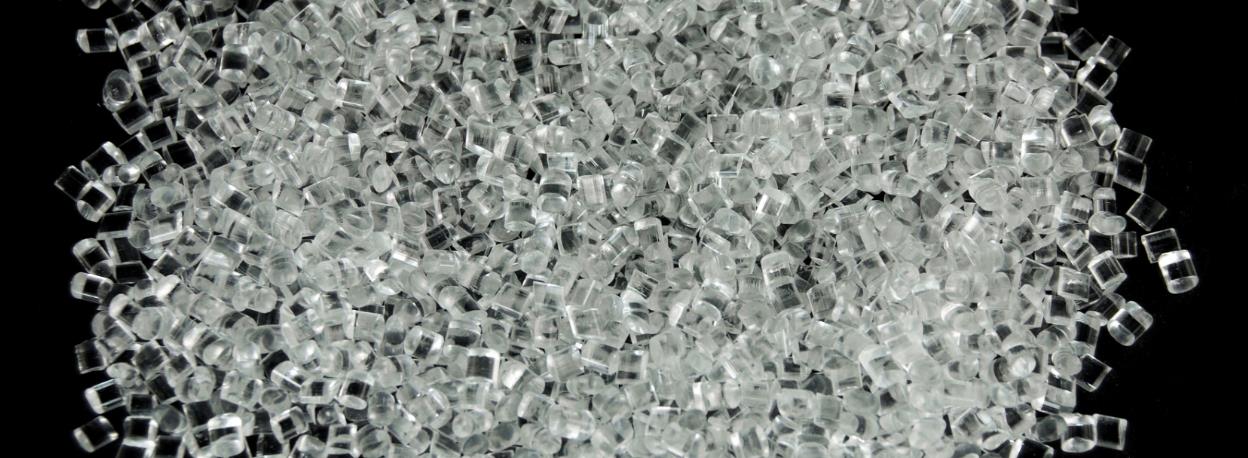
عملية الإنتاج
The production process of PVDF masterbatch generally includes steps such as raw material preparation, mixing, extrusion, granulation, packaging, etc. The following is a specific introduction:
1. Raw material preparation: Accurately select PVDF resin, additives and other raw materials according to the type of masterbatch. For example, in the production of colored masterbatch, it is necessary to choose the right pigment or dye, and in the production of functional masterbatch, corresponding functional additives such as anti-static agents and flame retardants should be prepared. The raw materials should have high purity, good dispersibility, and compatibility with PVDF resin. At the same time, the raw materials need to be dried to remove moisture, as moisture can affect the performance and processing of the masterbatch. Generally, the drying temperature of PVDF resin is between 80-120 ℃, and the drying time is 2-4 hours.
2. Mixing: Pour the prepared ingredients into the high-speed mixer according to the formula ratio for thorough mixing. During the mixing process, the additive is uniformly dispersed on the surface of PVDF resin particles through high-speed stirring, laying the foundation for subsequent processing. The mixing time is usually 10-30 minutes, depending on the characteristics of the raw materials and the mixing effect. For some additives that are difficult to disperse, the mixing time can be appropriately extended or added in batches.
3. Extrusion: The mixed raw materials enter the extruder for melt extrusion. The temperature setting of the extruder is crucial. Generally, the temperature gradually increases from the feeding section to the head, with the feeding section temperature ranging from 160-180 ℃, the compression section temperature ranging from 180-200 ℃, the metering section temperature ranging from 200-220 ℃, and the head temperature ranging from 220-230 ℃. During the extrusion process, the raw materials gradually melt under the push of the screw and are further mixed evenly under the action of shear force. Meanwhile, by adjusting the screw speed and back pressure to control the extrusion volume and material mixing effect, the screw speed is generally between 30-100 revolutions per minute.
4. Granulation: The strip material extruded from the extruder head is cooled and shaped by water or air cooling, and then enters the granulator for granulation. The tool speed and cutting length of the granulator determine the particle size and shape of the masterbatch. Usually, the particle size of the masterbatch is controlled at around 2-5 millimeters, forming a uniform cylindrical or spherical shape.
5. Packaging: After granulation, the mother granules are screened to remove particles with unqualified particle size, and then packaged. During the packaging process, attention should be paid to preventing moisture and contamination of the masterbatch. Generally, sealed bags or plastic drums are used for packaging, and product model, specifications, production date, and other information should be indicated on the packaging.
There may be some differences in the production process of different types of PVDF masterbatch. For example, in the production of conductive masterbatch, in order to ensure the uniform dispersion of conductive fillers, it may be necessary to use special dispersion equipment or add dispersion aids during the mixing stage; When producing blown film grade masterbatch, the requirements for the particle size distribution and melt flowability of the masterbatch are more stringent, and fine adjustments need to be made in the granulation and extrusion processes.
معدات الإنتاج
The equipment for producing PVDF masterbatch mainly includes raw material processing equipment, mixing equipment, extrusion granulation equipment, auxiliary equipment, etc. The following is a specific introduction:
1. معدات معالجة المواد الخام
Drying machine: used to remove moisture from PVDF resin and other raw materials. Common ones include hot air circulation dryers, vacuum dryers, etc. Hot air circulation dryer heats and dries materials through circulating hot air, suitable for large-scale production; A vacuum dryer dries materials in a vacuum environment, which can effectively prevent material oxidation and is suitable for raw materials with high drying requirements.
Screening machine: Screen the raw materials to remove impurities and particles with particle sizes that do not meet the requirements. A vibrating screen is a commonly used screening equipment that uses a vibrating motor to vibrate the sieve mesh, achieving material screening and grading.
2. المعدات الهجينة
High speed mixer: It is a device that preliminarily mixes PVDF resin with additives. It achieves uniform mixing of materials in a short period of time through high-speed rotating stirring blades, and has the characteristics of high mixing efficiency and good mixing effect.
Dual planetary mixer: For some formulations that require more uniform mixing and higher shear force requirements, the dual planetary mixer is more suitable. Its stirring blade rotates while revolving, allowing materials to be fully mixed in complex flow fields, especially suitable for additives with small amounts but requiring uniform dispersion.
3. Extrusion granulation equipment
Single screw extruder: With a simple structure and easy operation, it is suitable for the production of general-purpose PVDF masterbatch with low requirements for material mixing. It consists of a screw, a barrel, a heating and cooling system, a transmission system, etc. The material gradually melts and extrudes under the push of the screw.
Twin screw extruder: With excellent mixing, shearing, and conveying capabilities, it can evenly disperse additives in PVDF resin and is commonly used in the production of high-performance, functional PVDF masterbatch. The two screws of a twin-screw extruder mesh with each other, and precise processing of materials can be achieved through different screw combinations and speeds.
Granulator: Used in conjunction with an extruder to make extruded strip materials into granules. Common ones include hot cutting granulators and cold cutting granulators. The hot cutting granulator directly cuts the material into particles with a cutting tool during extrusion, and the particle shape is relatively regular; The cold cutting granulator first cools and shapes the extruded material before cutting, which is suitable for occasions with high requirements for particle appearance.
4. Auxiliary equipment
Cooling system: including chillers, cooling towers, and other equipment, used to cool the extruder barrel, molds, and pellets after granulation. The chiller takes away heat by circulating cold water, ensuring the normal operation of equipment and the cooling effect of materials; The cooling tower is used to cool the circulating water so that it can be reused.
Measuring equipment: such as electronic scales, flow meters, etc., used to accurately measure the input amount of various raw materials to ensure the accuracy of the formula. Electronic scales have the characteristics of high precision and fast measurement, and are commonly used for measuring solid raw materials; Flow meters are used to measure the flow rate of liquid additives and achieve precise addition.
Packaging equipment: Complete the packaging process of masterbatch, commonly including automatic packaging machines, sealing machines, etc. Automatic packaging machines can achieve automatic measurement, filling, and packaging of materials, improving packaging efficiency and quality; Sealing machine is used to seal packaged products to ensure the sealing of the packaging.
PVDF masterbatch extruder
Kerke’s masterbatch extruder can be used to produce PVDF masterbatch. Our PVDF masterbatch extruder has multiple models to choose from, which can meet different production requirements.
-

آلة البثق اللولبية المزدوجة للمختبر
متى ستحتاج إلى آلة بثق ثنائية اللولب للمختبر؟ إذا كنت ترغب في إجراء تجارب واختبارات...
-
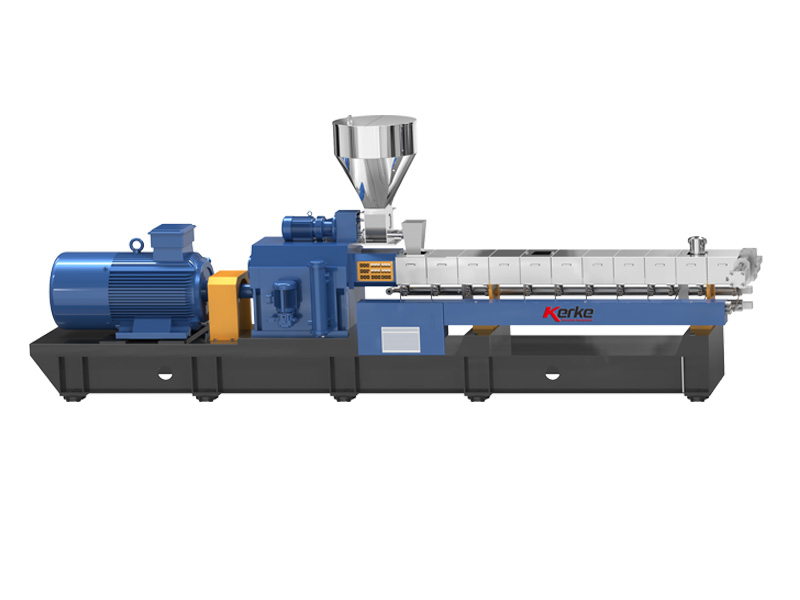
آلة البثق ذات اللولب المزدوج المتوازي
تم تصميم آلة البثق ذات المسمار المزدوج ذات الدوران المتوازي لدينا لتصنيع المركبات والدفعات الرئيسية مع سعة إنتاج تتراوح من...
-
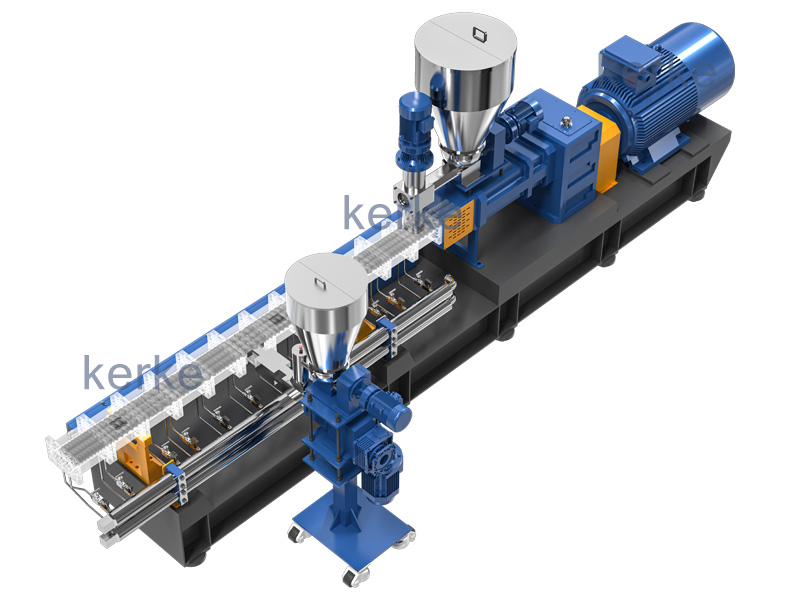
طارد ثلاثي (3 براغي)
آلة البثق ثلاثية البراغي هي تقنية جديدة ذات مزايا عديدة. تُستخدم آلة البثق ثلاثية البراغي بشكل رئيسي...
-
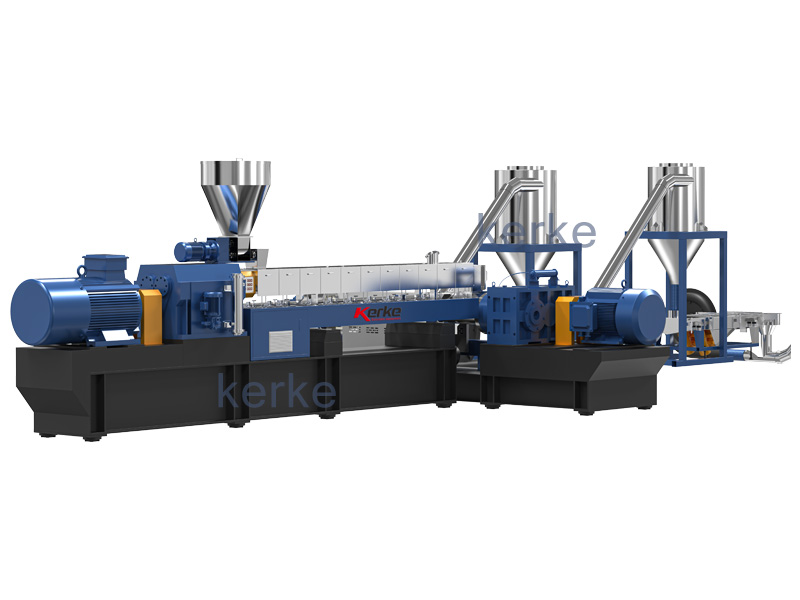
نظام البثق ثنائي المرحلة
تم تصميم نظام بثق الأم والطفل للمواد الخاصة التي لا يمكن معالجتها على مرحلة واحدة من البثق، المرحلة الأولى...
-
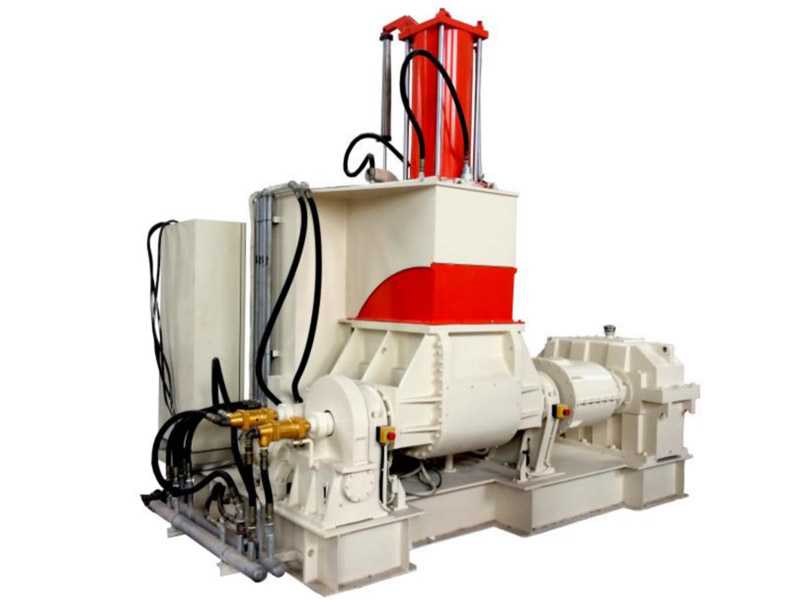
خط تصنيع العجنات في بانبوري
تم تصميم آلة العجن والبثق الخاصة بنا لصنع تطبيقات خاصة بسعة إنتاج تتراوح من 30 كجم / ساعة إلى 1000 كجم / ساعة.
-
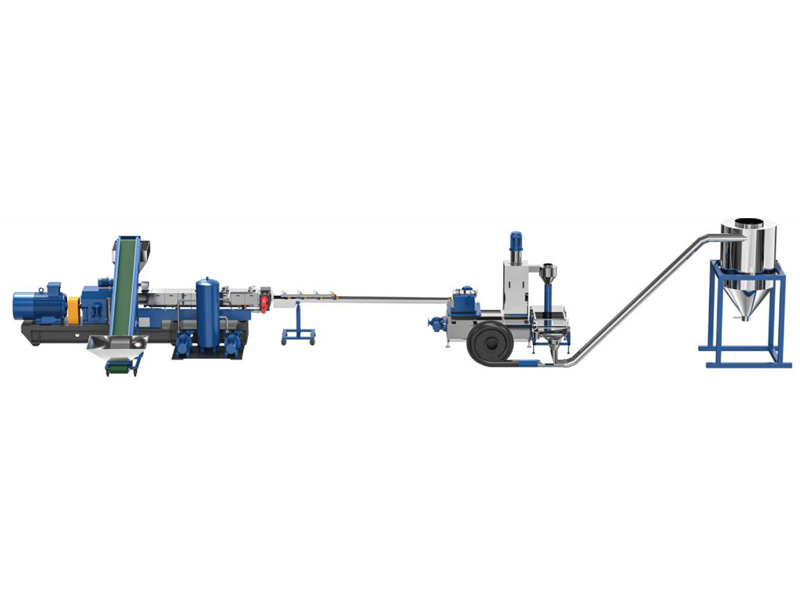
نظام القطع / نظام التكوير
تحتاج المواد المختلفة إلى نظام قطع مختلف، توفر شركة Kerke جميع أنواع أنظمة القطع، فيما يلي شرح لها…
Related requirements
The extruder is a key equipment for producing PVDF masterbatch. The following are some requirements for the extruder:
Good plasticizing ability
PVDF resin has a high melting point and viscosity, and requires an extruder to provide sufficient heat and shear force to achieve good plasticization. Therefore, the extruder should have a reasonable screw design and heating system to ensure that the PVDF resin can fully melt and achieve a uniform plasticization state during the extrusion process.
Usually, the length to diameter ratio (L/D) of the extruder screw should be large enough, usually between 20-30, to increase the residence time of the material in the barrel and improve the plasticizing effect. At the same time, the compression ratio of the screw also needs to be optimized according to the characteristics of PVDF, generally between 3-5, to achieve effective compression and plasticization of the material.
Accurate temperature control
PVDF is sensitive to processing temperature, and excessive temperature can easily lead to resin decomposition and discoloration, affecting the performance of the masterbatch; If the temperature is too low, it will cause poor plasticization of the material and make extrusion difficult. Therefore, the heating and cooling system of the extruder needs to have precise temperature control capabilities.
The barrel of an extruder usually adopts a segmented heating and cooling method, which is generally divided into 3-5 heating sections. Each heating section is equipped with an independent temperature sensor and controller, which can accurately control the temperature of each section. The temperature control accuracy should reach within ± 1 ℃. In addition, effective cooling devices such as air-cooled or water-cooled systems are required to provide timely cooling when the temperature is too high, ensuring that the extrusion process is carried out within a stable temperature range.
Stable extrusion pressure and flow rate
In order to ensure the quality stability of PVDF masterbatch, the extruder needs to provide stable extrusion pressure and flow rate. Stable extrusion pressure can evenly extrude materials in the mold, avoiding problems such as uneven discharge and uneven particle size; A stable flow helps to control production speed and product consistency.
The screw design and drive system of the extruder should be able to achieve stable material conveying and reduce pressure and flow fluctuations. Generally speaking, by using high-performance motors and reducers, coupled with advanced control systems, precise control of screw speed can be achieved, thereby ensuring the stability of extrusion pressure and flow rate. At the same time, the extruder should also be equipped with pressure sensors and flow control systems to monitor and adjust the pressure and flow parameters during the extrusion process in real time.
Excellent mixing and dispersion performance
For the uniform mixing and dispersion of various additives in PVDF masterbatch, the extruder needs to have good mixing and dispersion performance. This requires the screw to have a reasonable structure and component configuration, which can generate strong shear and stirring effects, allowing the additives to be fully dispersed in the PVDF resin.
For example, setting mixing sections and dispersing elements on the screw, such as toothed mixing blocks, pin screws, etc., can increase the mixing effect of materials. In addition, twin-screw extruders are usually superior to single screw extruders in terms of mixing and dispersion performance due to the mutual meshing and shear action between their two screws, making them more suitable for producing high-performance PVDF masterbatch containing multiple additives.
Corrosion resistance and wear resistance
PVDF has a certain degree of chemical corrosiveness, and during the extrusion process, there will be strong friction between the material and the screw, barrel, etc. Therefore, the components in contact with the material such as the screw and barrel of the extruder need to have good corrosion resistance and wear resistance.
Usually, screws and barrels are made of corrosion-resistant alloy steel materials and undergo surface hardening treatments such as hard chromium plating, nitriding, etc. to improve their corrosion resistance and wear resistance, and extend the service life of the equipment. At the same time, when selecting materials for screws and barrels, it is also necessary to consider their compatibility with PVDF resin to avoid chemical reactions during processing that may affect product quality.
طلب
PVDF masterbatch has various excellent properties, such as chemical corrosion resistance, high temperature resistance, weather resistance, electrical insulation, etc. Therefore, it has a wide range of applications in multiple fields. The following are some of the main application areas:
الأسلاك والكابلات
Insulation layer: PVDF masterbatch can be used to produce insulation layers for wires and cables. Due to its excellent electrical insulation performance, chemical corrosion resistance, and high temperature resistance, it can effectively protect the conductors inside wires and cables, prevent leakage and short circuits, and adapt to various harsh working environments such as high temperature, humidity, chemical corrosion, etc.
Sheath: The sheath made of PVDF masterbatch has excellent mechanical properties, wear resistance, and weather resistance, which can protect wires and cables from external mechanical damage, ultraviolet radiation, and climate change, and extend the service life of wires and cables. PVDF sheathed wires and cables are widely used in some special environments, such as petrochemical, mining, metallurgical and other industries.
Paint
Architectural coatings: PVDF masterbatch can be used as an additive in architectural coatings, which can significantly improve the weather resistance, corrosion resistance, and self-cleaning performance of the coatings. The exterior walls of buildings coated with PVDF coating can resist the erosion of natural environments such as ultraviolet rays, acid rain, and salt spray for a long time, maintain good appearance and performance, and reduce building maintenance costs.
Industrial Coatings: In the surface coating of industrial equipment such as bridges, ships, and machinery, PVDF masterbatch helps to improve the adhesion, wear resistance, and chemical corrosion resistance of coatings, enabling equipment to maintain good protective performance in harsh industrial environments, reducing equipment corrosion and damage, and improving equipment reliability and service life.
Lithium battery
Adhesive: PVDF masterbatch is a commonly used adhesive material in lithium battery production. It can firmly bond electrode active materials, conductive agents, etc. together to form a stable electrode structure, improve the conductivity and mechanical strength of the electrode, and ensure the stability and safety of the battery during charging and discharging.
Membrane coating: PVDF masterbatch can also be used to prepare lithium battery membrane coatings. By coating PVDF coating on the surface of the separator, the puncture resistance, thermal stability, and electrolyte wettability of the separator can be improved, thereby enhancing the performance and safety of the battery, preventing internal short circuits, and extending the cycle life of the battery.
Injection molding
Chemical equipment components: By utilizing the chemical corrosion resistance and high temperature resistance of PVDF masterbatch, injection molding can be used to manufacture components such as pipelines, valves, and pump bodies in chemical equipment. These components can work stably in corrosive media such as strong acids and alkalis, reducing the risk of equipment corrosion and leakage, and improving the safety and reliability of chemical production.
Electronic and electrical components: In the field of electronic and electrical equipment, PVDF masterbatch can be used for injection molding to produce some components with special requirements, such as connectors, insulation brackets, etc. Its excellent electrical insulation and mechanical properties can meet the high-performance requirements of electronic and electrical products for components, ensuring product quality and safety.






